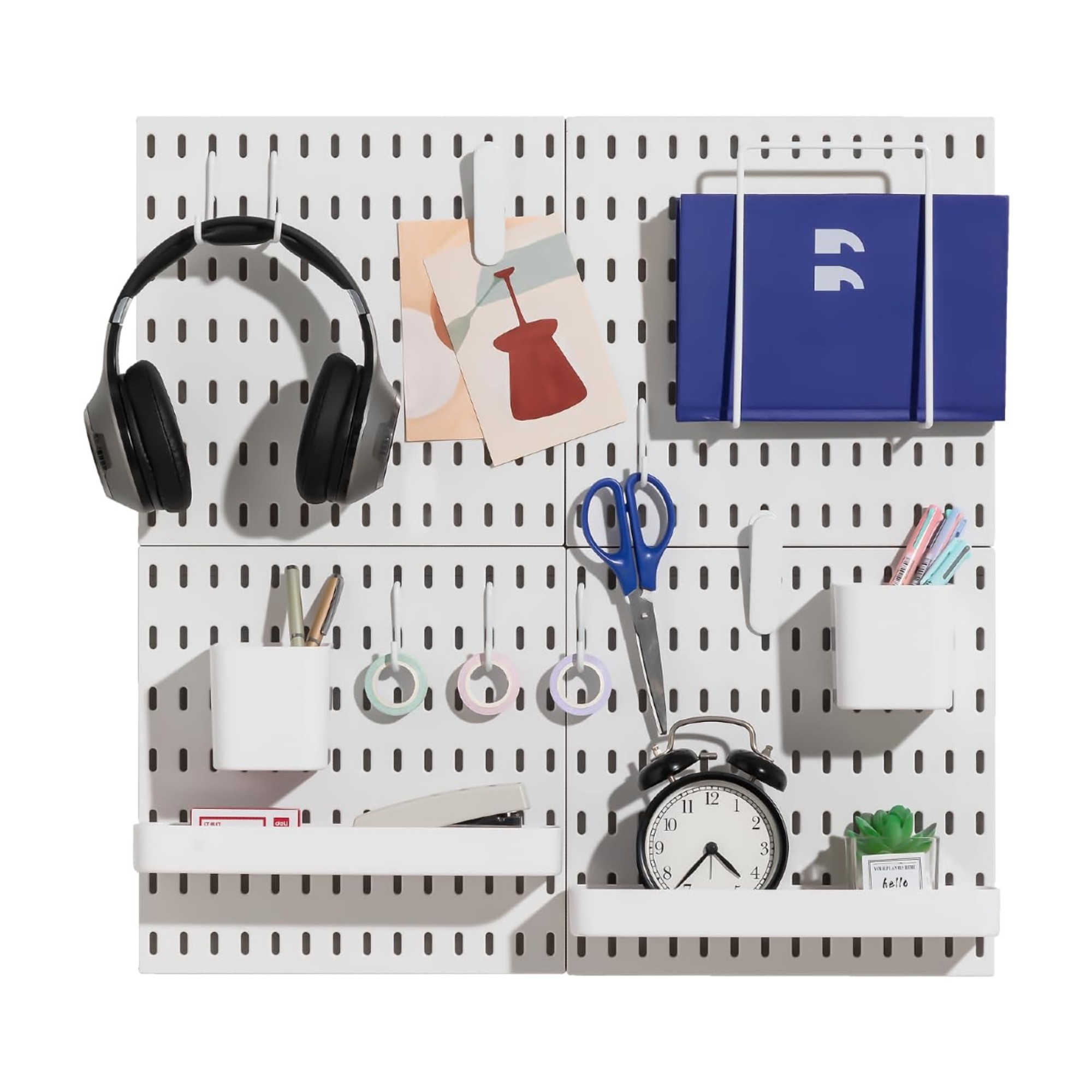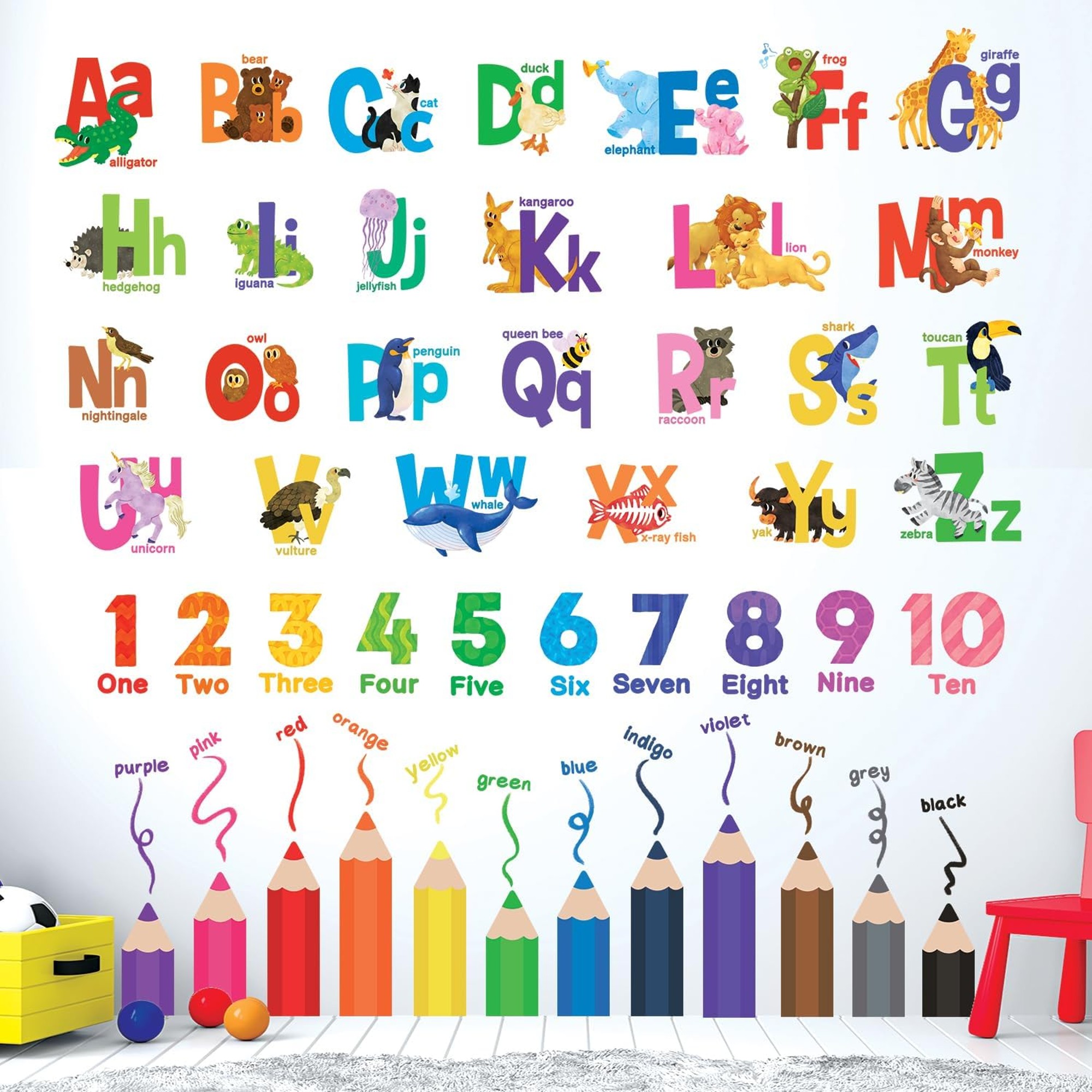8 ideas for playroom walls that are fun, playful but also practical for little ones
How to make the most of the playroom walls and bring the whole space to life
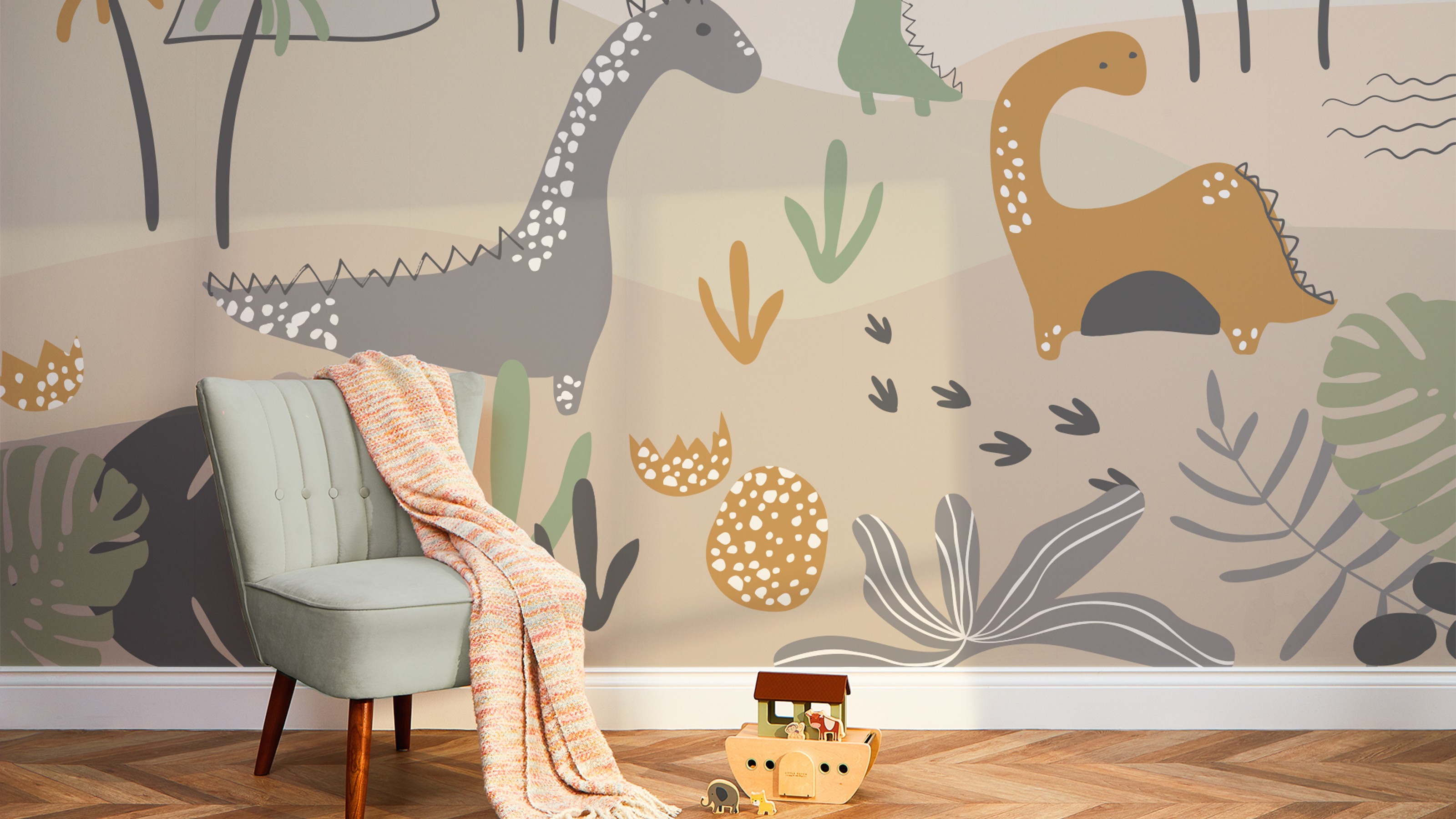

Walls in any room play a crucial role in bringing the space together. But when it comes to a playroom, the walls play an even more important role as the walls are where the room really comes alive – as long as you go for the best and most suitable ideas for playroom walls for your kids, of course.
Every child, along with their likes and needs, is different. And that should be reflected in the playroom ideas and design you impart on what is ultimately their space. Making them involved in the design and decision processes is a good way to go about it, including what you do with the four walls of their play area.
‘When decorating a children’s area, it is important to consider your child’s personality and tastes, and how they might evolve in the future,’ says Annica Wallin, creative director of Scandinavian wall art brand, Desenio.
From wallpaper to paint ideas and even toy storage, these are some of the ways in which you can make the most of your kids’ playroom walls.
1. Create a playful wall mural

Wallpaper ideas are great for playrooms, whether you cover only one feature wall with it or all of them. It’s an easy way to inject some pattern and colour into the space. But what’s even better than a regular wallpaper is a wall mural. There are wallpaper brands that make wallpaper murals or you can even paint one yourself.
‘Adding wallpaper murals with playful themes like animals, space, the jungle, or underwater scenes can transform a room and ignite children’s imaginations,’ says Chelsea Clark, head of marketing at I Love Wallpaper. ‘You can even use different wallpapers to create themed corners or zones within the playroom.’
2. Put wallpaper on the ceiling

You should never forget about the fifth wall of the room – the ceiling. Especially in a playroom as you can get playful with it and mimic the appearance of the sky – whether that’s the sky during the day with clouds and the sun shining or a night sky with stars and even planets.
Get the Ideal Home Newsletter
Sign up to our newsletter for style and decor inspiration, house makeovers, project advice and more.
‘If you want to take it further, don’t forget the fifth wall! Using wallpaper on the ceiling to create a starry night scene or magical sky can add even more excitement to the room,’ Chelsea says.
3. Paint walls in pastel colours
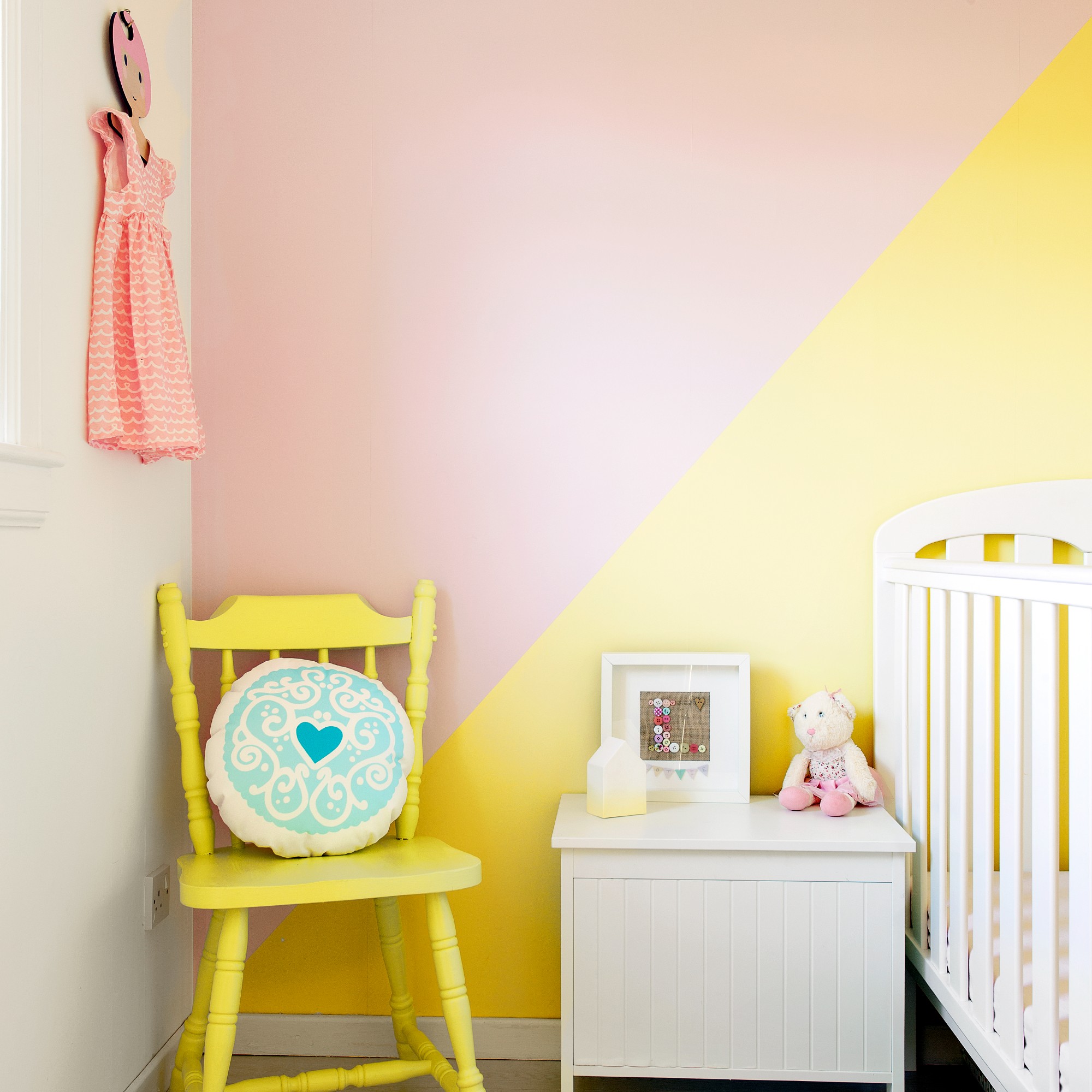
Pastel shades are one of the latest paint trends. But not only that, soft pastels also make for the perfect colour scheme for kids’ playrooms and bedrooms as they introduce colour but in a calm way.
‘Choosing colours for a playroom will all come down to what mood you want the room to have. Soft yellows, light blues and greens are known to evoke happiness, creativity and create a cheerful atmosphere. Light blue and green in particular have a calming effect, which can help balance the energy of an active playroom,’ Chelsea recommends.
Also if you’re undecided whether to go for a wallpaper or paint on your children’s playroom walls, just know you can do both only in different sections of the room. But there are also pros and cons to both.
‘Both wallpaper and paint can work for playrooms in different ways depending on personal preference. Wallpaper offers an array of designs, patterns, and themes, allowing you to create an engaging and unique environment that is tailored to your child’s interests. On the other hand, paint can be more flexible and cost-effective, allowing for easy updates and touch ups as children grow and their preferences change,’ Chelsea explains.
4. Include educational motifs

You can make learning fun. Especially when incorporating it in a fun environment like a playroom. From map wallpapers to alphabet art prints, they will all help your child learn without even knowing it.
‘Keep the playroom enchanting but educational! Combine alphabet prints, educational animal posters and fun world maps. This creates educational talking points throughout the room,’ Annica says.
Chelsea agrees, ‘Educational patterns with numbers, the alphabet, maps, or shapes can make a playroom both fun and instructional, allowing children to learn in a playful manner.’
5. Use walls for storage
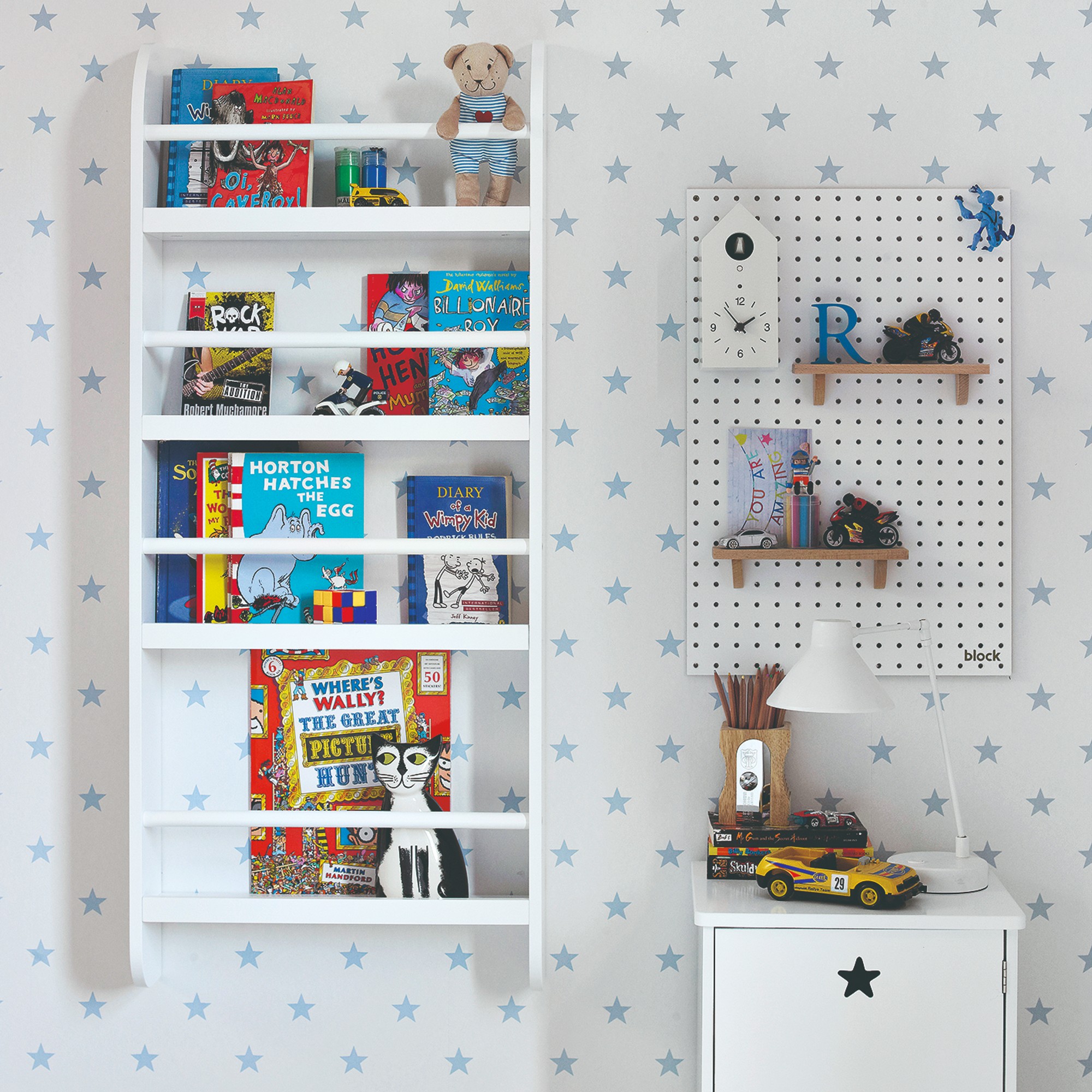
It’s not just decorative purposes that playroom walls can be used for. It’s also the perfect space to include some playroom storage ideas and free up some extra space for play.
‘Functional decorations like hooks or pegboards can help keep a playroom organised,’ Chelsea suggests.
From hooks - they can even be playful ones shaped like animals like these Wooden Animal Wall Hooks from Amazon - to pegboards and even shelves to display their books and toys, anything can go on those playroom walls.
6. Hang their favourite prints and posters

‘Wall art is a great choice for a child’s room because they can easily be switched up as they grow and develop new interests,’ Annica says.
Wall art is perfect for bringing some more vibrant colours into the space, as well as make your little ones happy by displaying anything from their favourite animals to favourite movie characters.
‘Consider hanging colourful artwork or posters that feature your child’s favourite characters or choose a favourite feature from the wallpapers,’ Chelsea adds.
Annica recommends a picture ledge to best display these, although hanging them on the wall is also a great option. ‘Use picture ledges to easily vary and switch out your designs without needing to drill new holes in the wall.’
7. Decorate with your child's name

Let your little one know that this is truly their space by personalising it with their name, displayed front and centre on the wall. They are sure to love it.
‘Custom name signs will make the space uniquely theirs,’ Chelsea confirms.
Annica adds to the idea, ‘For a personal and timeless detail, feature your child’s initials in a watercolour print.’
8. Invest in display frames for your kids’ art
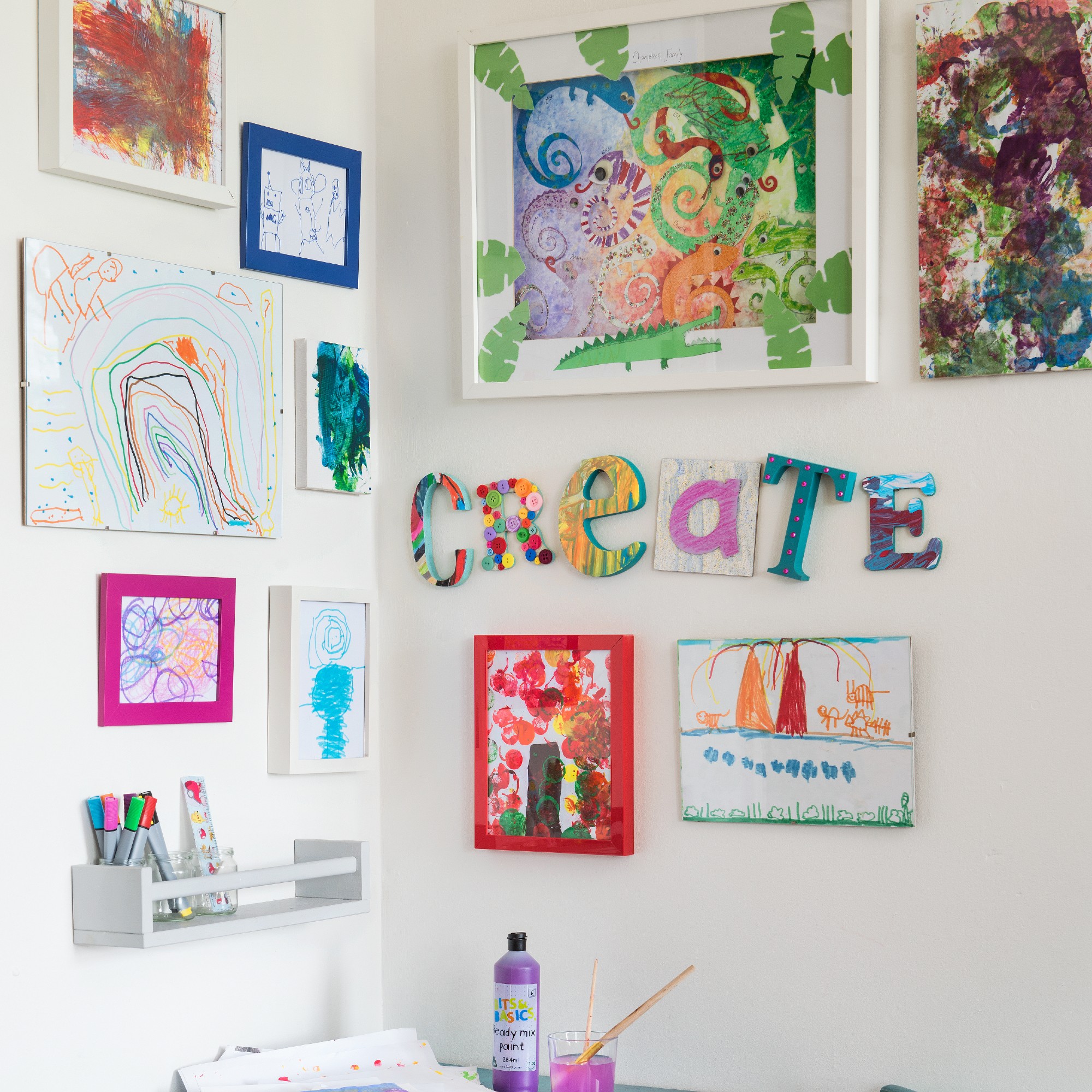
In our opinion, whatever else you decorate your kids’ playroom walls with, there is one element that you simply can’t miss – and that’s their own art that they themselves have produced, displayed proudly on the walls of their fun area.
But to display their pieces of art well, we recommend these Amazon frames designed specifically for kids’ art so you’re able to open them from the front and simply add the latest one on top of the last one. Or you can swap them out if you wish.
‘Frames that once displayed illustrations for your newborn can later show prints of their favourite movie characters. Investing in frames and setting up a gallery wall that can grow with your child is a great way to create an interior that will be loved for years to come,’ Annica concludes.
Get the look
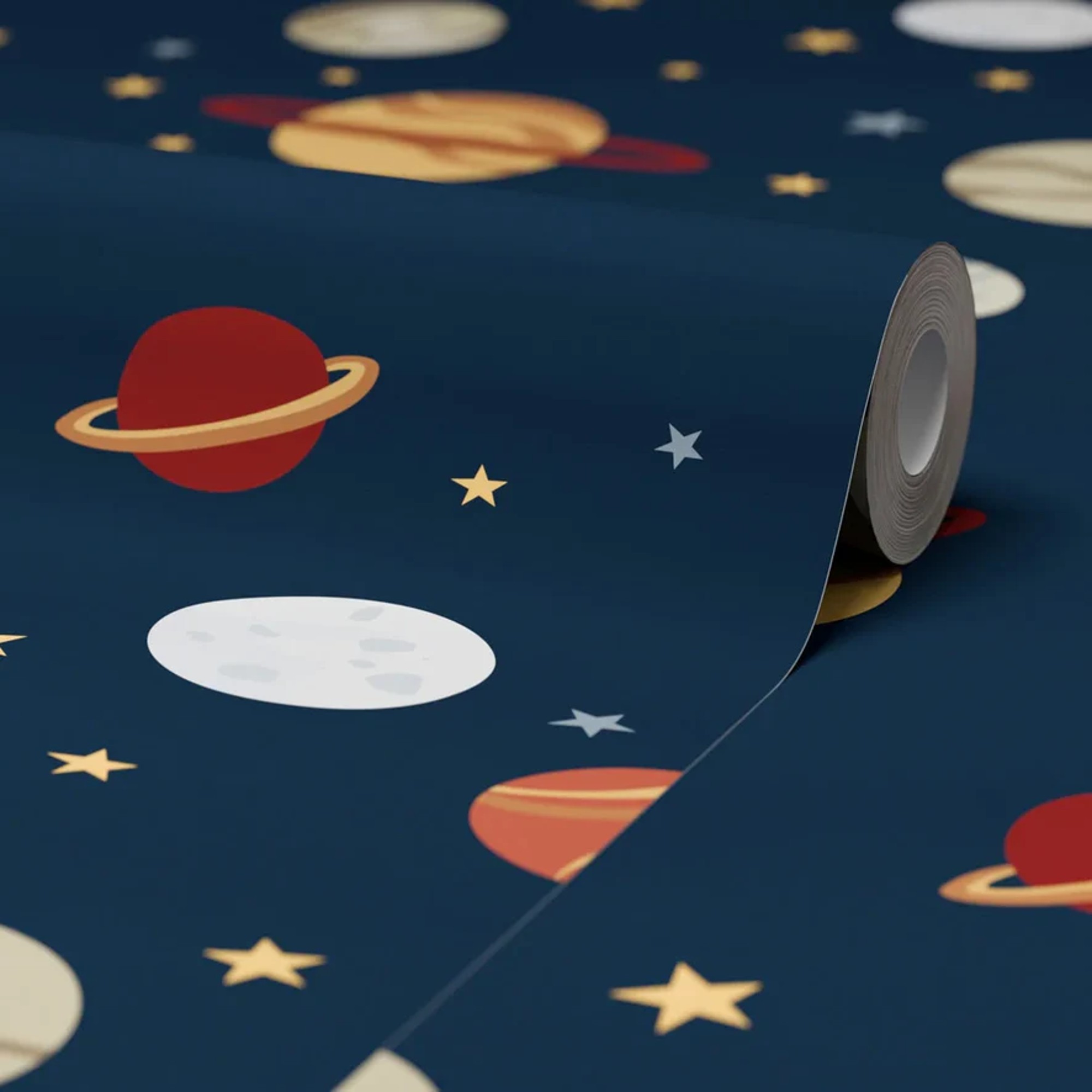
If you're looking for wallpaper to give the feel of a magical night sky to put on your little one's playroom ceiling, then look no further than I Love Wallpaper's Playful Universe design.

We've been obsessed with the clever display frames ever since stumbling upon them on Instagram a few months back. There are various sizes available but the A4 size tends to be the most common paper size your child is most likely to paint and draw on.

Yellow is an uplifting and mood-boosting colour so it makes perfect sense in a playroom. Especially if you go for a slightly softer shade than the classic sunshine yellow like the Eggnog from Frenchic. Its paints are chalk-based and free of toxins, washable and easy to clean.
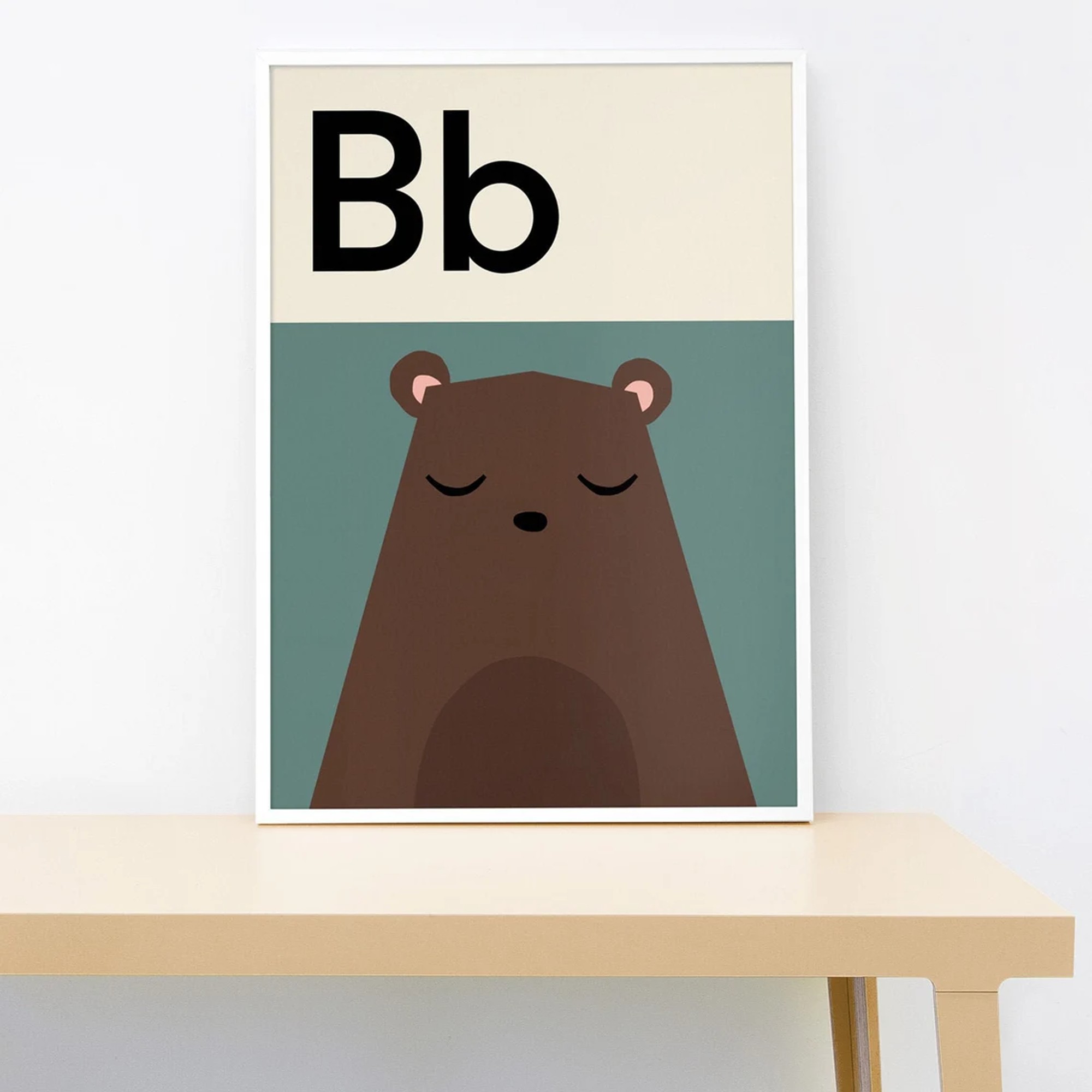
Lorna Freytag's illustrated art prints perfectly marry aesthetics with cuteness and learning. Her educational alphabet prints couldn't be more adorable and this 'B for bear' design is among the most well-known and popular ones.
And that’s how you make your little one’s playroom all the more special.

Sara Hesikova has been a Content Editor at Ideal Home since June 2024, starting at the title as a News Writer in July 2023. She is now also the Ideal Home Certified Expert in Training on Furniture, and so far has tested 80 different sofas.
Graduating from London College of Fashion with a bachelor’s degree in fashion journalism in 2016, she got her start in niche fashion and lifestyle magazines like Glass and Alvar as a writer and editor before making the leap into interiors, working with the likes of 91 Magazine and copywriting for luxury bed linen brand Yves Delorme among others.
-
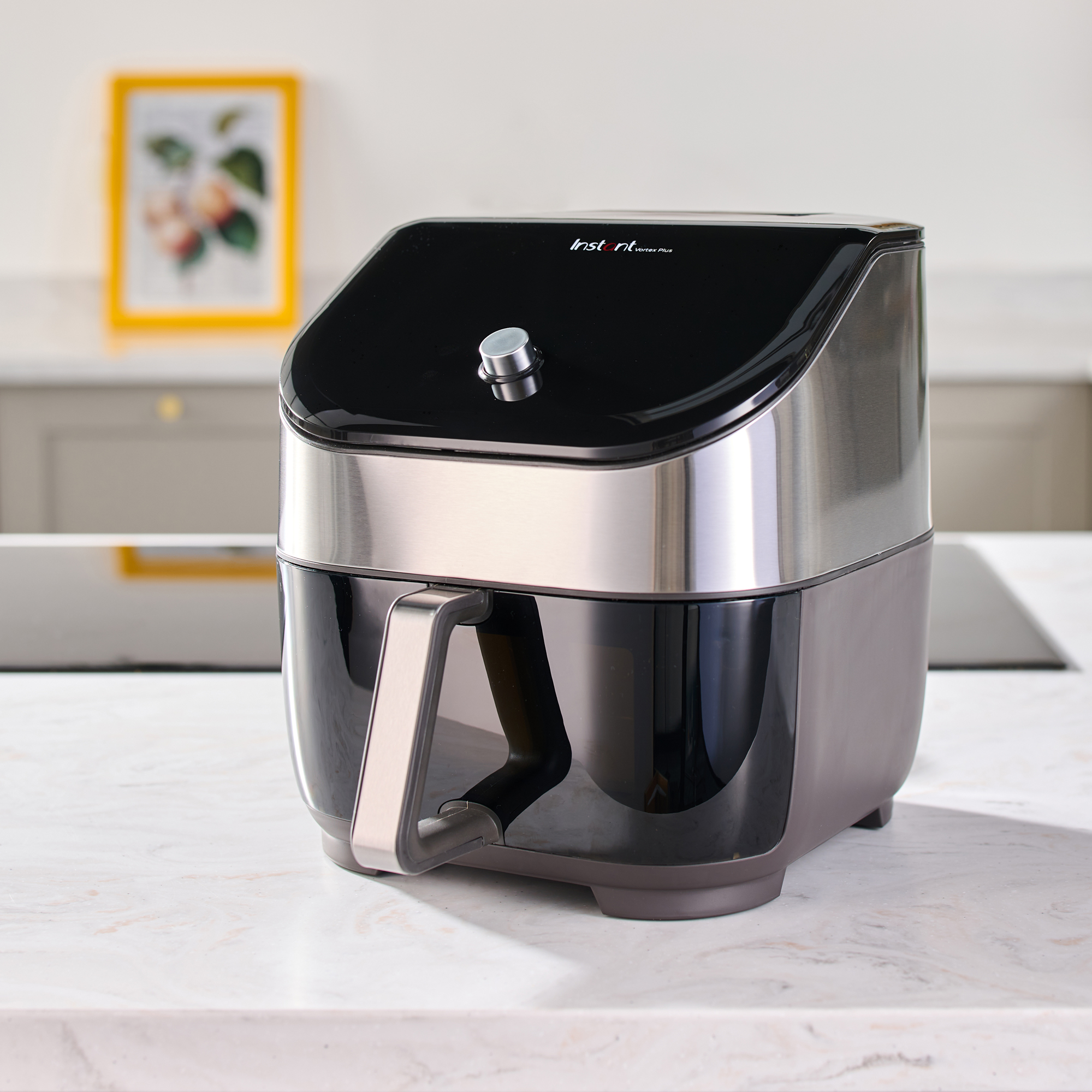 Should an air fryer be on display in a kitchen or hidden away? This is why I always keep my small appliances on the worktop
Should an air fryer be on display in a kitchen or hidden away? This is why I always keep my small appliances on the worktopAre you on team display or neatly hidden away? Share your opinion in the comments
By Rebecca Knight
-
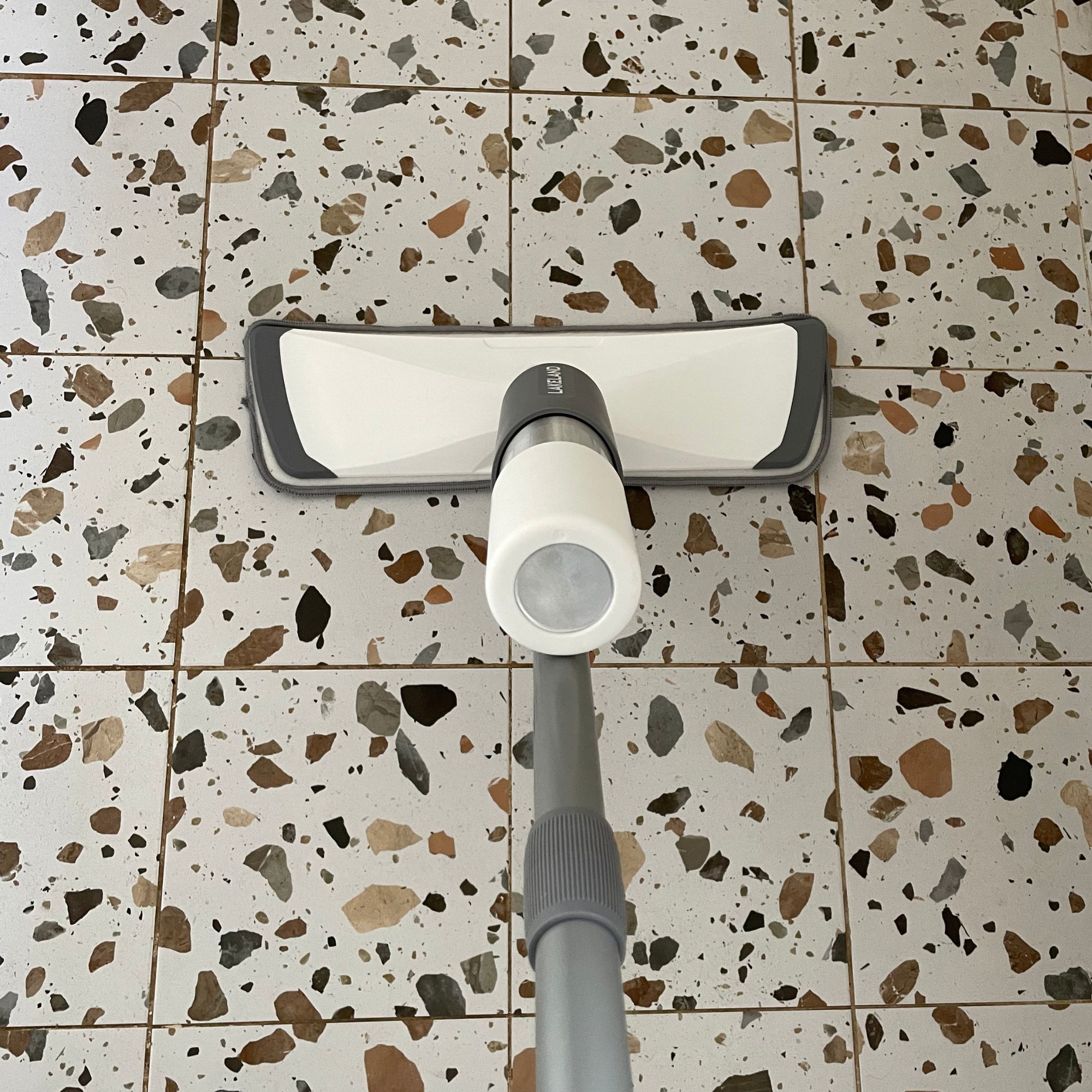 Experts warn that these 5 mopping mistakes are making your floors dirtier — and damaging your floors in the process
Experts warn that these 5 mopping mistakes are making your floors dirtier — and damaging your floors in the processThis is how to keep them clean and avoid costly damage
By Lauren Bradbury
-
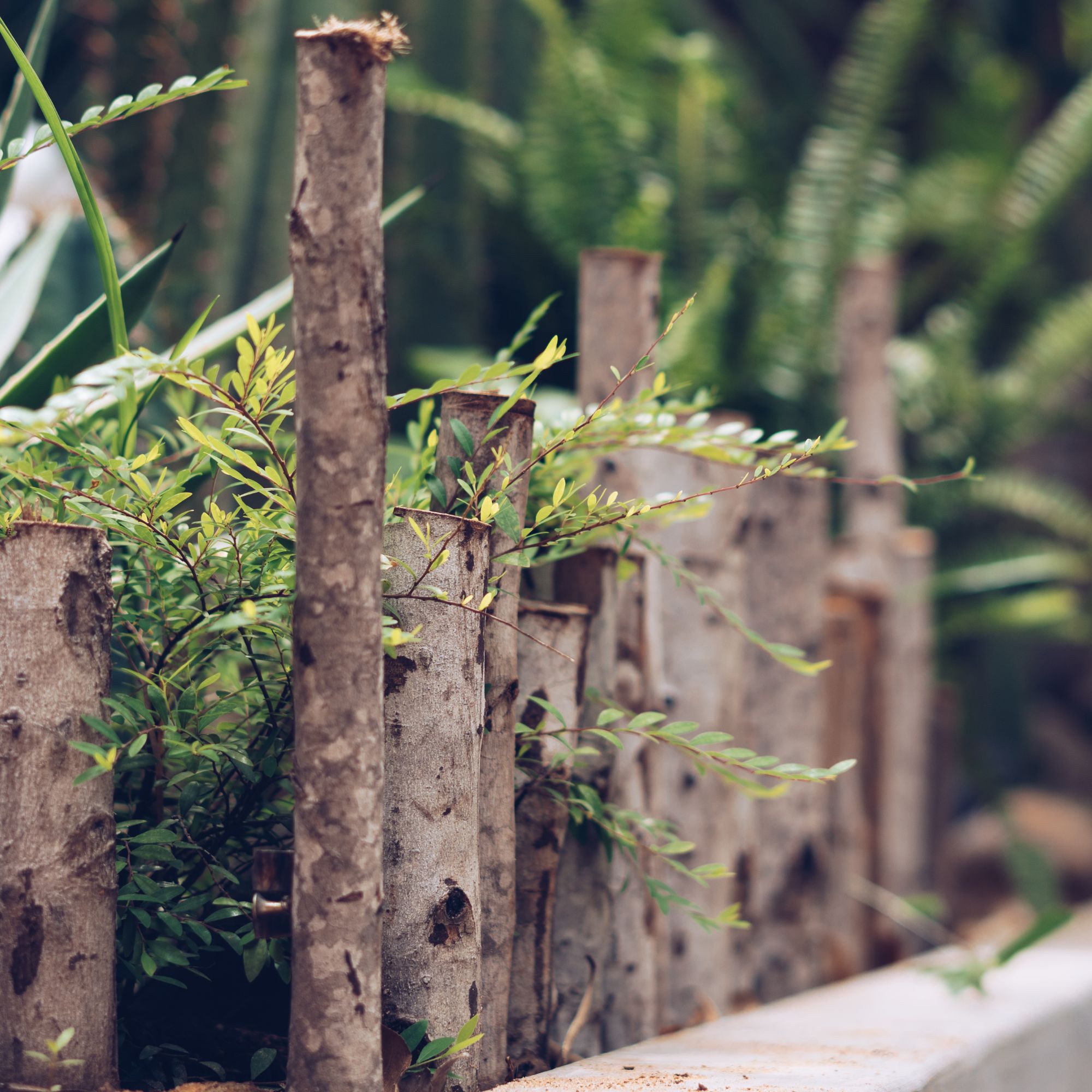 Move over, fences – dead hedges are the wild and wonderful alternative your garden will love and they're easier to build than you'd think
Move over, fences – dead hedges are the wild and wonderful alternative your garden will love and they're easier to build than you'd thinkThe perfect eco-friendly solution for small gardens
By Kayleigh Dray
-
 This beautiful mixing bowl is the unexpected star of so many kitchens – including Mary Berry's and the Bake Off tent
This beautiful mixing bowl is the unexpected star of so many kitchens – including Mary Berry's and the Bake Off tentThis earthenware bowl proves that you don't have to spend a huge amount for a classic kitchen addition
By Molly Cleary
-
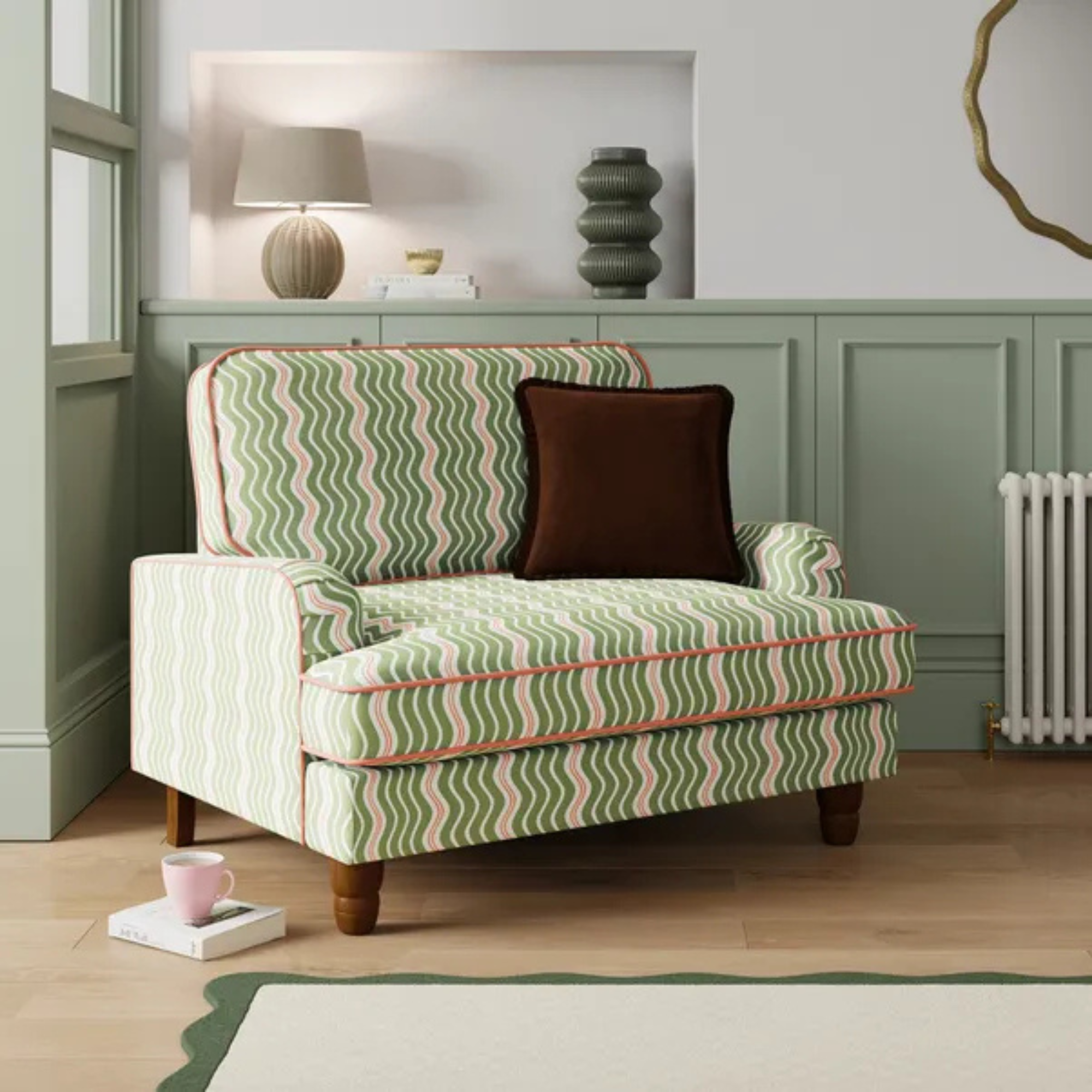 Dunelm has given its cult snuggle chair a new look - it's swapped classic stripes for another emerging pattern trend
Dunelm has given its cult snuggle chair a new look - it's swapped classic stripes for another emerging pattern trendI'm obsessed with this fresh new style
By Kezia Reynolds
-
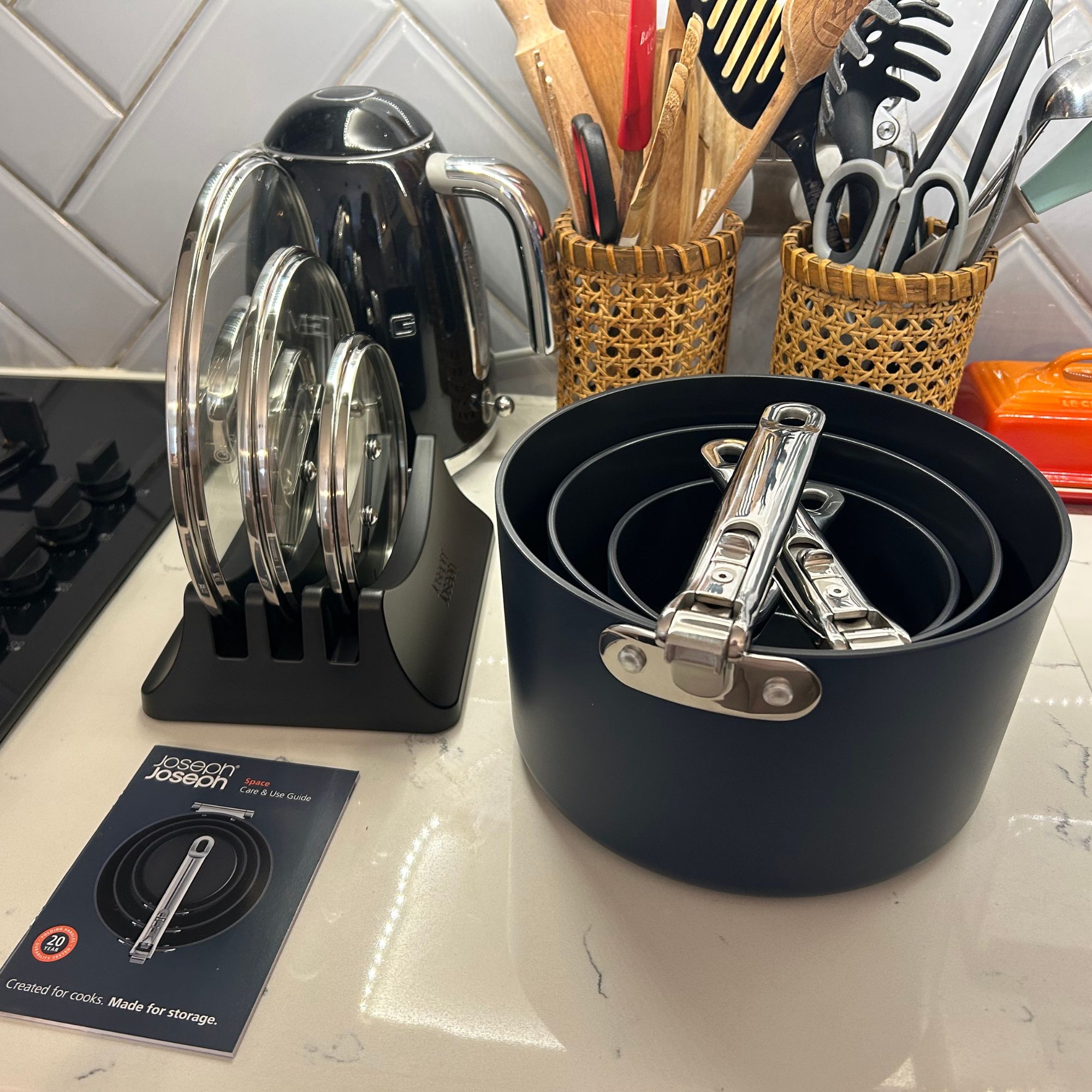 I tried Joseph Joseph's pan set with foldable handles – the space-saving design is just one of the many highlights
I tried Joseph Joseph's pan set with foldable handles – the space-saving design is just one of the many highlightsSmall kitchen? I tested this innovative Joseph Joseph space-savvy set which has foldable handles — and I loved it
By Annie Collyer
-
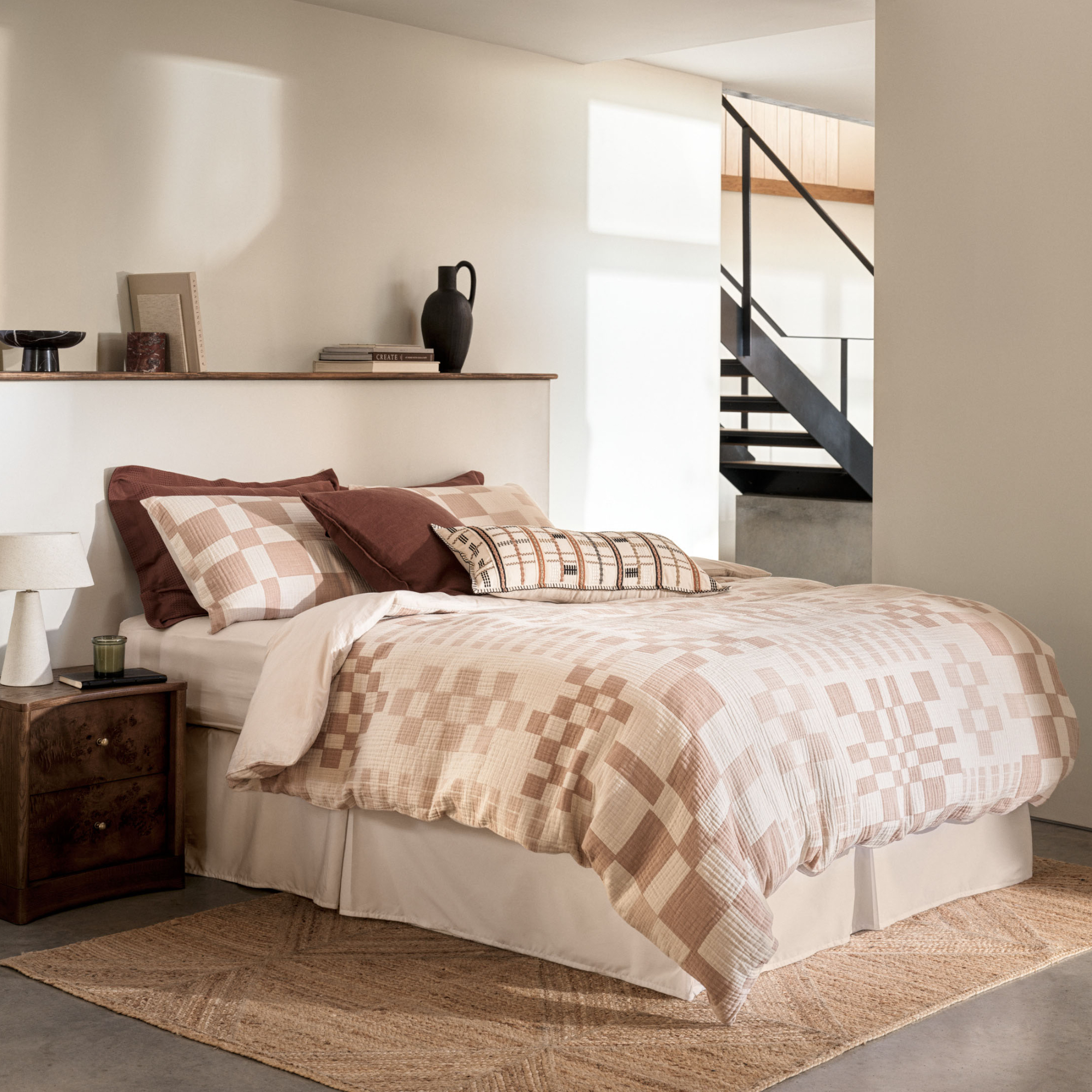 As a stylist, I spend hours looking for bedding for photoshoots, and I just spotted these 6 expensive-looking sets at M&S
As a stylist, I spend hours looking for bedding for photoshoots, and I just spotted these 6 expensive-looking sets at M&SGet a little luxury at a high-street price
By Laurie Davidson
-
 I've been waiting to try out the Ninja Slushi for months – this is what happened the first time I tried it
I've been waiting to try out the Ninja Slushi for months – this is what happened the first time I tried itThe Ninja Slushi is the stuff of dreams for summer entertaining
By Molly Cleary
-
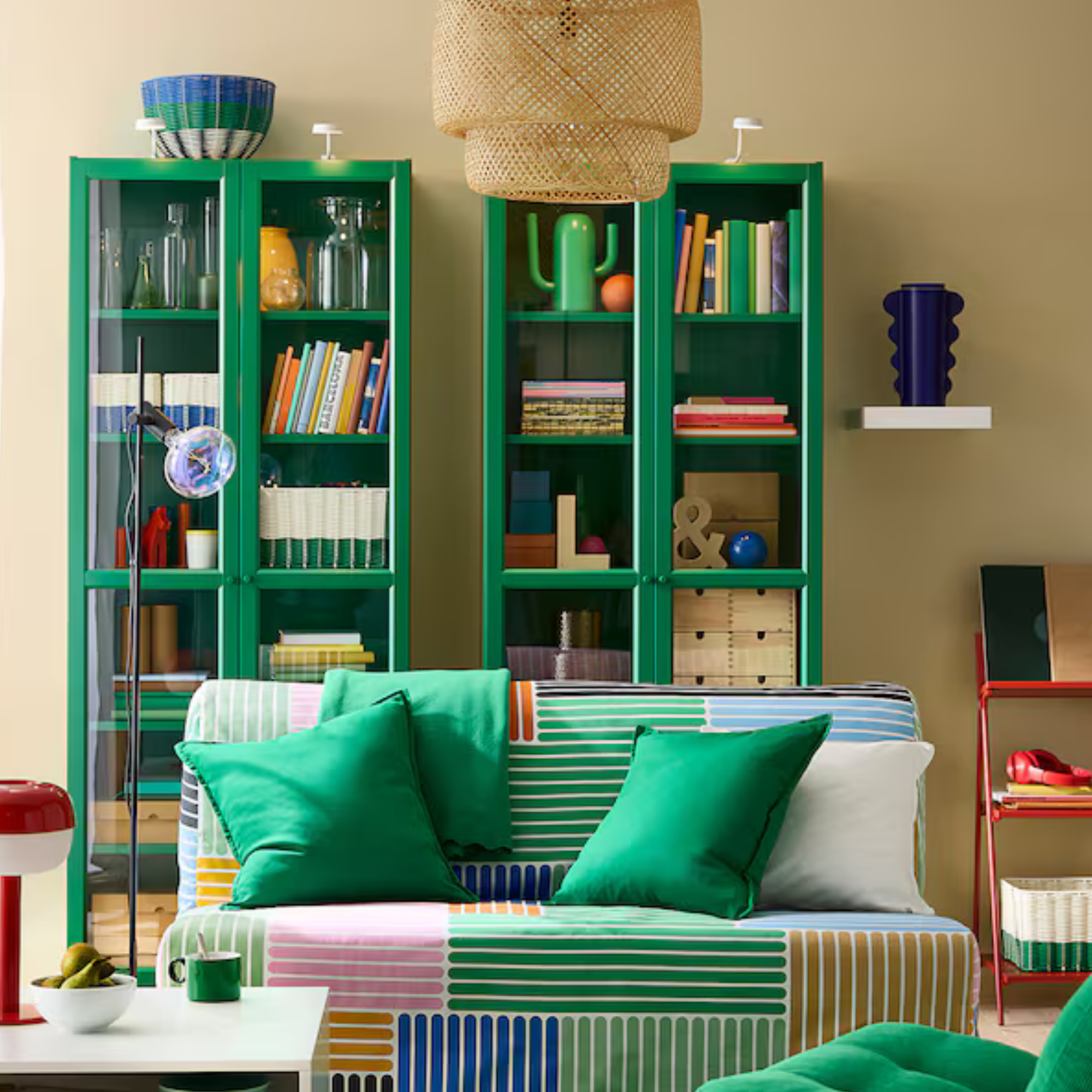 IKEA has drenched its BILLY bookcase in this year’s ‘it’ colour - but you’ll have to act fast if you want to get your hands on one
IKEA has drenched its BILLY bookcase in this year’s ‘it’ colour - but you’ll have to act fast if you want to get your hands on oneI'm obsessed with this gorgeous limited-edition colourway
By Kezia Reynolds
-
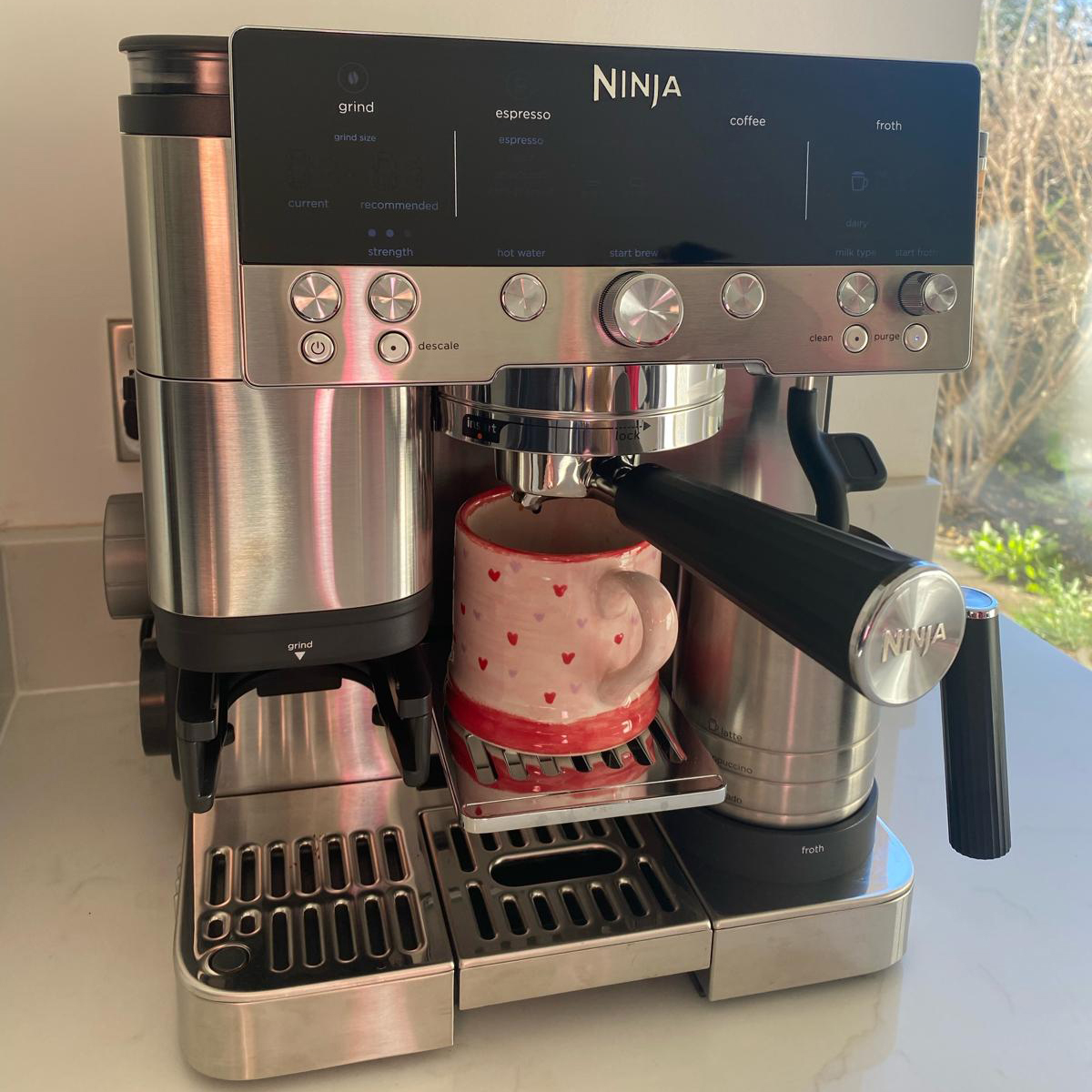 My go-to Ninja coffee machine just had a major price drop. It's more affordable than I've seen it before
My go-to Ninja coffee machine just had a major price drop. It's more affordable than I've seen it beforeIt makes coffee shop quality achievable at home
By Molly Cleary
-
 I'm a kitchen decor editor and didn't like this tableware trend - until I saw H&M Home's designer-look plates
I'm a kitchen decor editor and didn't like this tableware trend - until I saw H&M Home's designer-look platesThey made it easy to justify a new crockery set
By Holly Cockburn
